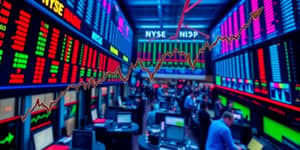
Share buybacks have evolved from niche financial maneuvers into a mainstream tool for corporate finance, shaping market dynamics and investor outcomes. Understanding their multifaceted impact can empower investors to make informed decisions and appreciate the strategic calculus behind each repurchase.
At its core, a share buyback occurs when a company repurchases its own equity from the public market, leading to a reduction in outstanding shares and often a boost in per-share metrics.
Buyback programs typically follow one of several avenues:
After repurchase, shares may be cancelled permanently or held as treasury stock for future needs, such as employee compensation.
Companies pursue buybacks for varied reasons, each reflecting a distinct strategic priority:
Financing a buyback often involves deploying retained earnings, excess cash on the balance sheet, or even debt. The chosen method influences both balance sheet strength and future financial flexibility.
In the United States, companies following SEC Rule 10b-18 safe harbor enjoy legal protection against manipulation claims, provided they adhere to volume, timing, and price conditions. Since 2023, an additional 1% excise tax applies to buybacks over $1 million.
To contextualize buybacks, it helps to see how they contrast with dividend payouts:
A primary attraction of buybacks lies in boosting earnings per share metrics. Consider a firm with 100 million shares outstanding, trading at $10 each, generating $50 million in earnings. After repurchasing 10 million shares at market price:
- Pre-buyback EPS: $50 million ÷ 100 million = $0.50 per share
- Post-buyback EPS: $50 million ÷ 90 million = $0.56 per share
If the price-to-earnings ratio remains constant, the share price may theoretically climb from $10 to $11.20, reflecting a 12% instantaneous increase purely from the EPS uplift.
Empirically, markets often reward buyback announcements with a short-term price increase, interpreting them as signals of corporate confidence. However, long-term outcomes depend on execution quality: repurchasing at inflated levels or leveraging heavily can saddle the company with long-term negative consequences.
Share repurchases have surged over the past decades, especially in the United States. S&P 500 companies routinely deploy hundreds of billions annually to buybacks, with global adoption rising in Europe and Asia.
Research by leading investment banks suggests the latest cycle of repurchases may have peaked, raising questions about the sustainability of using free cash flow for capital returns amid slowing growth opportunities.
While buybacks can align management and shareholder interests, they also carry pitfalls. Executives with share-based compensation may be tempted to repurchase shares to drive up EPS and bolster personal wealth.
Critics argue that excessive repurchases may signify underinvestment in core business, fueling income inequality and short-termism. Legislative proposals in various jurisdictions periodically seek to impose higher taxes or stricter limits on buyback volumes.
When evaluating a buyback program, consider:
Ultimately, a well-executed buyback can enhance shareholder value, but due diligence is essential to distinguish between opportunistic repurchases and opportunistic timing that may backfire.
Share buybacks remain a powerful lever in corporate finance, capable of delivering meaningful benefits when used judiciously. They influence key metrics, send strong market signals, and offer a flexible alternative to dividends. Yet, they also invite scrutiny over governance, timing, and broader economic impact.
For investors, the key lies in assessing the quality of execution, the sustainability of funding, and the alignment of repurchases with long-term strategic goals. By doing so, one can navigate the complex landscape of buybacks and harness their full potential in shaping portfolio returns.
References













